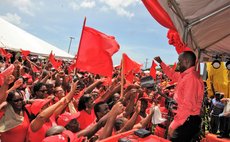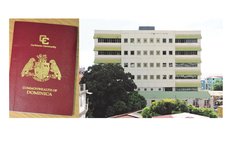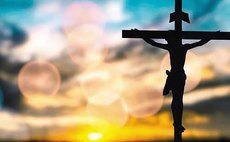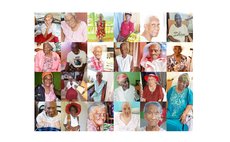Fortieth anniversary of May 29, 1979 -"Those who cannot remember the past are condemned to repeat it"
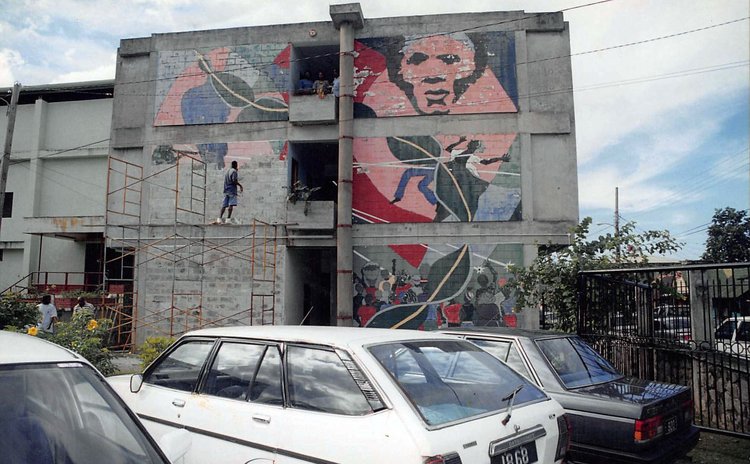
"It rained later that day; a steady persistent downpour that washed the blood- stained streets and dispersed the crowds which had gathered on the streets earlier before," writes Dr. Irving André in his just-published book 'The Rise and Fall of Patrick Roland John' about May 29, 1979, the riots that occurred just six months after Dominica gained independence from Britain
"In the vicinity of the Ministry stones on the roads served as grim reminders of what had transpired before while the smell of cordite hovered over the scene, many gripped by anger over what they had witnessed."
What "they had witnessed" was the shooting of unarmed protesters by the army and police of the Labour Party Administration of Patrick John on May 29, 1979.
Next week Wednesday, Dominicans will remember the 40th anniversary of this appalling day, a day that changed the trajectory of the future of Dominica; a day that Dominicans should try desperately not to repeat; a day that could reoccur if we continue to forget the lessons of history, if we continue to ignore the demands of the people; if we continue to ignite the flames of political divisiveness, if we continue to dismantle, covertly and overtly, the very foundations of our fledgling democracy. Because, according philosopher George Santayana: "Those who cannot remember the past are condemned to repeat it".
"In the following days, the Dominican people resolved to take matters into their own hands," André continued. " Following the barbarity of May 29, 1979, ministers of government fell on their swords and one by one, save and except a few, started to resign from government. They did not do so out of any moral outrage or regret over the DDF's actions or loss of life: they did so because of what a local attorney called the "constitutional coul woche brigade".
Among the main ring leaders of the May 29, 1979 riots, only Charles Savarin is alive. Dame Eugenia, the prime minister is dead and so is Louis "Zarbocka" Benoit, the union leader. Remarkably, Charles Savarin is not only very much alive, he is Dominica's President.
May 29, 1979 is definitely one of the most significant dates in the short history of Dominica. Yet many forget that date and fail to consider its significance when it comes around. In our view May 29, 1979 is as momentous an occasion as Independence Day, Emancipation Day, the devastation of Dominica by Hurricane David on August 29, 1979 and the billion-dollar-damage-causing Hurricane Maria on September 18, 2017.
Anthony Astaphan SC, the éminence grise of the current ruling Dominica Labour Party regime, has called the revolution a "kool wosh brigade" because the rioters used stones and bottles to pelt at their tormenters. But May 29 was much more than throwing stones.
The current economic and social conditions in Dominica and in the period leading up to the civil unrest of May 29, 1979 are so similar that some commentators have predicted that history may be about to repeat itself. We may be wrong but we doubt Dominicans can come together again like they did in 1979 to overthrow an extremely unpopular government, even if the economic conditions are similar today. There are no more people like Charles Savarin (of the 70's) and Eugenia Charles of the Dominica Freedom Party.
In a series of essays on the riots (published in the Sun in 2016) Historian Dr. William "Para" Riviere agrees that "the ousting of the John regime was rooted substantially in the economic circumstances of the island. Internal self-government, labelled Associate Statehood, had been granted by the Colonial Power in 1967, leaving the island, except for grant-in-aid, to paddle its own canoe … A conspiracy of forces would plunge the island's economy into a crisis --- the 1974 Budget debate in Parliament called upon the already hard-pressed public to bear an additional burden of taxation --- neither the State sector, nor the co-operative or private sectors advanced --- Productive capacity slackened, if not stagnated --- unemployment and underemployment escalated".
Strapped for cash, the government of Patrick John turned to apartheid South Africa, the establishment of a pseudo- free port zone in Portsmouth conceived by Texas businessman Don Pierson, and undertook other questionable capital ventures.
As the population endured that dreadful economy, the Government further risked confrontation with the militant trade unions by enacting the Industrial Relations (Amendment) Act and the Prohibited and Unlawful Societies and Association Act (The Dread Act).
But what are the lessons we can learn from May 29, 1979?
"The greatest lesson we can learn from the past . . .
